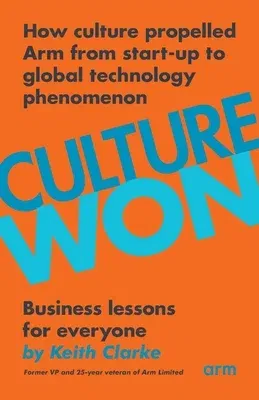This book is about the company culture that helped drive Arm Limited's
spectacular growth to become the world's leading semiconductor
Intellectual Property (IP) company. Its extremely power-efficient
processor technology has been licensed to hundreds of semiconductor chip
manufacturers and Original Equipment Manufacturers (OEMs). Arm is still
largely unknown to the broader public, yet Arm's technology is nearly
ubiquitous and has been a foundational building block of the global rise
of the smartphone. Arm-based microprocessors power over 95% of the
world's mobile phones.
However, this book is not about technology. It's about how a company
grew from being a small start-up in Cambridge, UK with 12 people and a
£1.75m cash investment to a global organization with over 5,000
employees in over 50 countries and more than $1.5bn revenue in 2016 when
SoftBank acquired it for $32bn. Arm Limited was founded as Advanced RISC
Machines in November 1990, a joint venture between a British computer
manufacturer, Acorn Computers Limited and its much larger US competitor,
Apple Computers Inc. The purpose of the new venture was to develop and
proliferate the uniquely power-efficient and high-performance RISC-based
microprocessor technology that had been developed several years earlier
by Acorn.
Using first-hand interviews with founders and the author's knowledge,
this book charts some of the key people involved in the birth of the
technology and the company Advanced RISC Machines. It considers how
their behaviors and decisions led to the creation of the licensing
business model and the strategy that underpinned Arm's later success.
This book reveals some of the layers that help explain how the
combination of culture, strategy and execution built the world's leading
semiconductor IP company. It provides insight into ten essential
ingredients of Arm's success, including the company's unique
proposition, how the early business model and strategy were formed, the
creation and evolution of the winning culture, the ecosystem of shared
success and how Arm stayed unified throughout a period of extraordinary
growth.
The purpose of the book is to help readers create a culture of
inclusiveness, collaboration and innovation within their own
organizations. The book provides examples from Arm's history which
should provide inspiration and guidance for making the necessary changes
to enable a winning culture.
Additional details of interest to history lovers include the stories
behind the BBC Microcomputer prototype, the Acorn RISC Machine
microprocessor development, Advanced RISC Machines' creation, the
partnership-focused licensing business model's development, the nearly
lost design-win at Nokia for their new GSM mobile, the 20+ billion
selling Cortex(R)-M product that almost didn't happen and the battle for
smartphones and tablets with Intel.
www.culturewon.com


